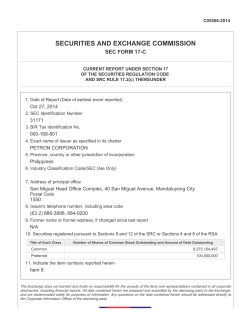
Progressive Disclosure Progressive disclosure is commonly used in software to conceal complexity. In this dialog box, basic search functionality is available by default. However, more complex search functionality is available upon request by clicking More Choices. A strategy for managing information complexity in which only necessary or requested information is displayed at any given time. Find Progressive disclosure involves separating information into multiple layers and only presenting layers that are necessary or relevant. It is primarily used to prevent information overload, and is employed in computer user interfaces, instructional materials, and the design of physical spaces.1 1 The seminal applied work on progressive disclosure is the user interface for the Xerox contains Find: Star computer. See “The Xerox ‘Star’: A Retrospective” by Jeff Johnson and Teresa Search: on all disks L. Roberts, William Verplank, David C. Smith, Charles Irby, Marian Beard, Kevin Mackey, Progressive disclosure keeps displays clean and uncluttered and helps people manage complexity without becoming confused, frustrated, or disoriented. For example, infrequently used controls in software interfaces are often concealed in dialog boxes that are invoked by clicking a More button. People who do not need to use the controls never see them. For more advanced users, the options are readily available. In either case, the design is simplified by showing only the most in Human Computer Interaction: Toward the Fewer Choices Year 2000 by Ronald M. Baecker, Jonathan Morgan Kaufman Publishers, 1995, p. 53-70. 2 A common mistake is to present ail available Low walls allow visitors near the end of the line to see they are getting close to the end. information and options at once with the frequently required controls by default, and making additional controls available rationale that it reduces kinematic load. Since on request.2 progressive disclosure affects only infrequently used elements and elements for which a Learning efficiency benefits greatly from the use of progressive disclosure. Information presented to a person who is not interested or ready to process it is effectively noise. Information that is gradually and progressively disclosed to person may not be ready, it will generally have minimal effect on kinematic load. Conversely, presenting everything at once will significantly increase cognitive load. a learner as they need or request it is better processed and perceived as more relevant. The number of errors is significantly reduced using this method, and 3 See, for example, “Training Wheels in a User consequently the amount of time and frustration spent recovering from errors is Interface” by John M. Carroll and Caroline also reduced.3 Carrithers, Communications of the ACM, 1984, vol. 27(8), p. 800-806; and The Nurnberg Progressive disclosure is also used in the physical world to manage the perception of complexity and activity. For example, progressive disclosure is found in the design of entry points for modern theme park rides. Exceedingly long lines not only frustrate people in line, but also discourage new people from the ride. Theme park designers progressively disclose discrete segments of the line (sometimes supplemented with entertainment), so that no one, in or out of the line, ever sees the line in its entirety. Use progressive disclosure to reduce information complexity, especially when people interacting with the design are novices or infrequent users. Elide infrequently used controls or information, but make them readily available through some simple operation, such as pressing a More button. Progressive disclosure is also an effective method for leading people through complex procedures, and should be considered when such procedures are a part of a design. See also Chunking, Errors, Layering, and Performance Load. 188 U niversal P rin c ip le s o f Design Cancel Grudin, William A. S. Buxton, Saul Greenberg, Funnel by John M. Carroll, MIT Press, 1990. Theme park rides often have very long lines— so long that seeing the lines in their entirety would scare away many would-be visitors. Therefore, modern theme park rides progressively disclose the length of the line, so that only small segments of the line can be seen from any particular vantage point. Additional distractions are provided in the form of video screens, signage, and partial glimpses of people on the ride. Find
© Copyright 2025














